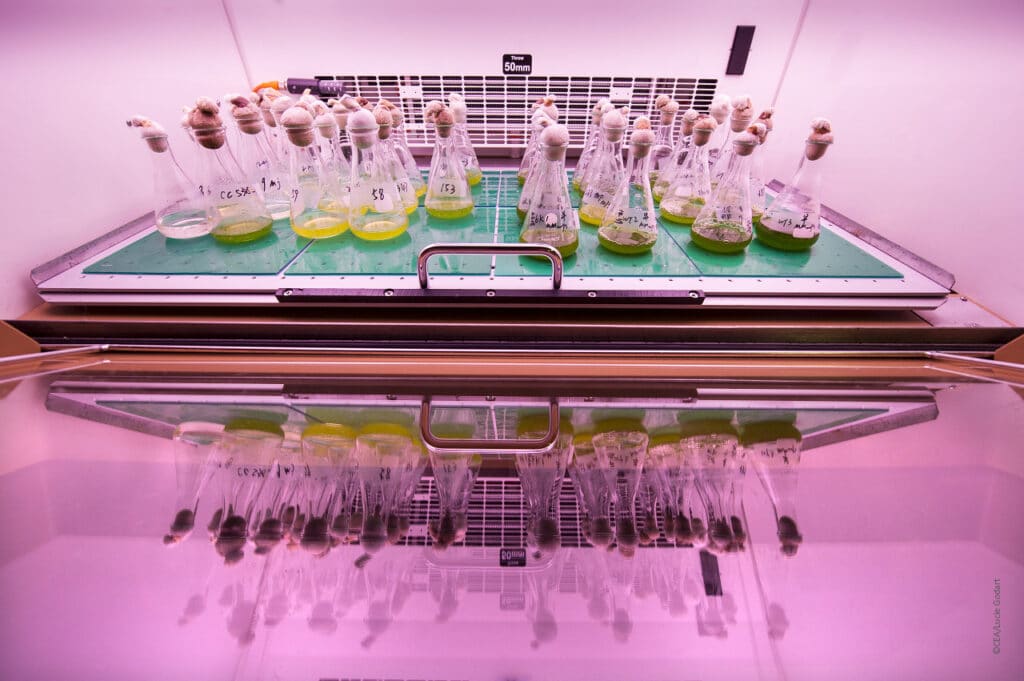Microalgae: the FAP enzyme on the road to biofuels

PRESS RELEASE In 2017, CEA researchers discovered an enzyme with a rare property: activated by light, it enables microalgae to convert their fatty acids directly into hydrocarbons. Today, together with the Institut Polytechnique de Paris, they have succeeded in understanding and demonstrating that this “FAP” enzyme can produce gasoline-type hydrocarbons, thanks to an auto-catalytic effect. […]
When microbiology meets materials science and advanced imaging techniques to better understand symbiotic interactions

A scientific consortium, led by CEA and CNRS researchers of the Institute Biosciences and Biotechnologies of Aix-Marseille (BIAM), have revealed the symbiosis between microbial organisms, whose magnetic properties allow them to navigate collectively in sediments. This work, published in the journal Proceedings of the National Academy of Science, opens the way to apply interdisciplinary approaches […]
Surprising copper biomineralisation discovered in a strain of magnetotactic bacteria

BIAM scientists and their partners have identified a novel genetically controlled biomineralisation in a magnetotactic bacterium: located at the cell periphery, the periplasm, a genetically-controlled sulfur and copper compound is formed. This discovery opens the way to new bioremediation applications. The living world has a multitude of organisms capable of synthesising mineral structures by incorporating […]
Enzyme tandem responsible for dangerous crop pest fungi

During research on the bioproduction of citrus flavours by phytopathogenic fungi, scientists from INRAE, CNRS and CEA-BIAM discovered the role of a pair of enzymes in their infectious mechanism. This is an important advance that could help accelerate the reduction in the use of fungicides. The objective of the Funtastic project supported by the ANR […]
The photosynthetic booster of microalgae revealed

PRESS RELEASE Press area – cea.fr An international collaboration involving BIAM researchers and the Carnegie Institution for Science of Stanford (USA) has deciphered the mechanism by which microalgae capture atmospheric CO2 in an extremely efficient manner. The research teams have revealed photosynthetic energy production and distribution networks that are involved in the concentration of CO2 […]